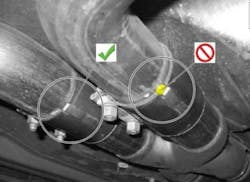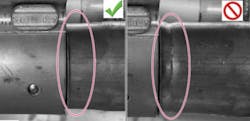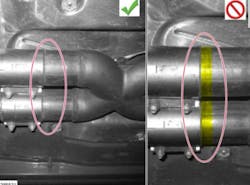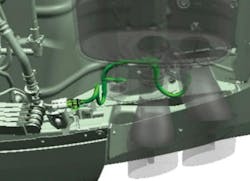Inspecting Ford active exhaust system
Some 2018-2022 Ford Mustang vehicles may exhibit various concerns with the active exhaust system.
These may include Drive Mode Not Available or Exhaust Mode Not Available messages, and/or illuminated MIL with DTCs P26C5, P26C6, P26FE, P22BF9, P2BFB, P26C7, P2BF5, P2BF8, P2BFD and/or P2BFA. This may be due to an improperly seated exhaust system.
If P26FE or P2BFB are present, using a scan tool, access the datalogger and view the PCM parameter identifications (PIDs). Monitor the EFCV_A_MON_STAT PID while actively commanding the EFCV_A_CMD PID.
Open the tailpipe actuator in 10% increments until it has reached 100% (fully open). Close the tailpipe actuator in 10% increments until it has fully closed. If a mechanical fault is indicated, remove the exhaust actuator and insect the physical binding and/or blockage and repair as needed.
If the concern is still present, inspect the muffler and tailpipe assembly and both catalytic converters for proper positioning in the exhaust clamps which secure them together. Make sure that the exhaust clamp locking tab is fully engaged to the converters.
Make sure that the knurled/ridge area of the muffler and tailpipe assembly are covered by the exhaust clamps. Adjustments can be made by loosening the clamps and repositioning.
Inspect the exhaust actuator wiring harness for damage as well.
About the Author
Motor Age Staff
Motor Age has been publishing technical content for professional automotive technicians since 1899. Our writers have decades of experience and scores of ASE certifications, and they continue to teach new generations of technicians via classrooms all around the globe, as well as through the books and training manuals they've authored.




